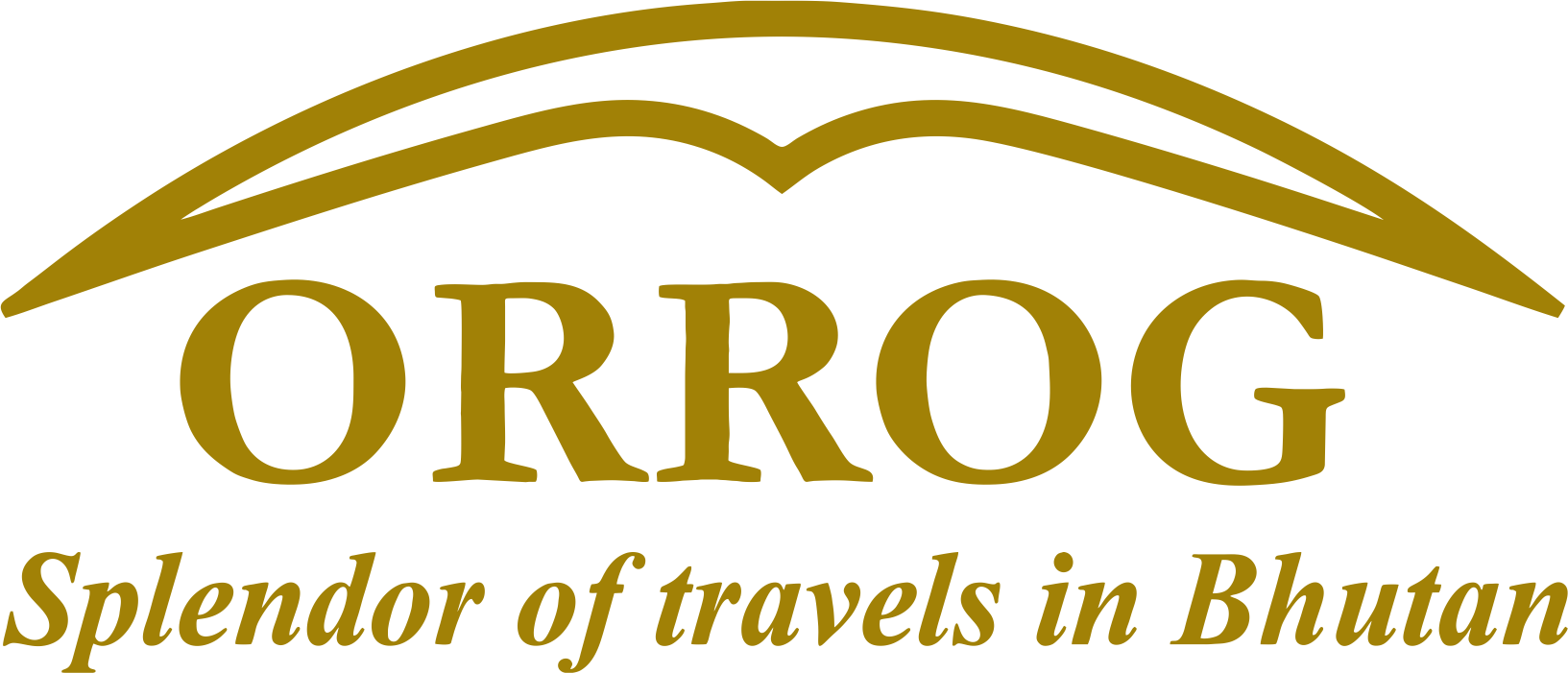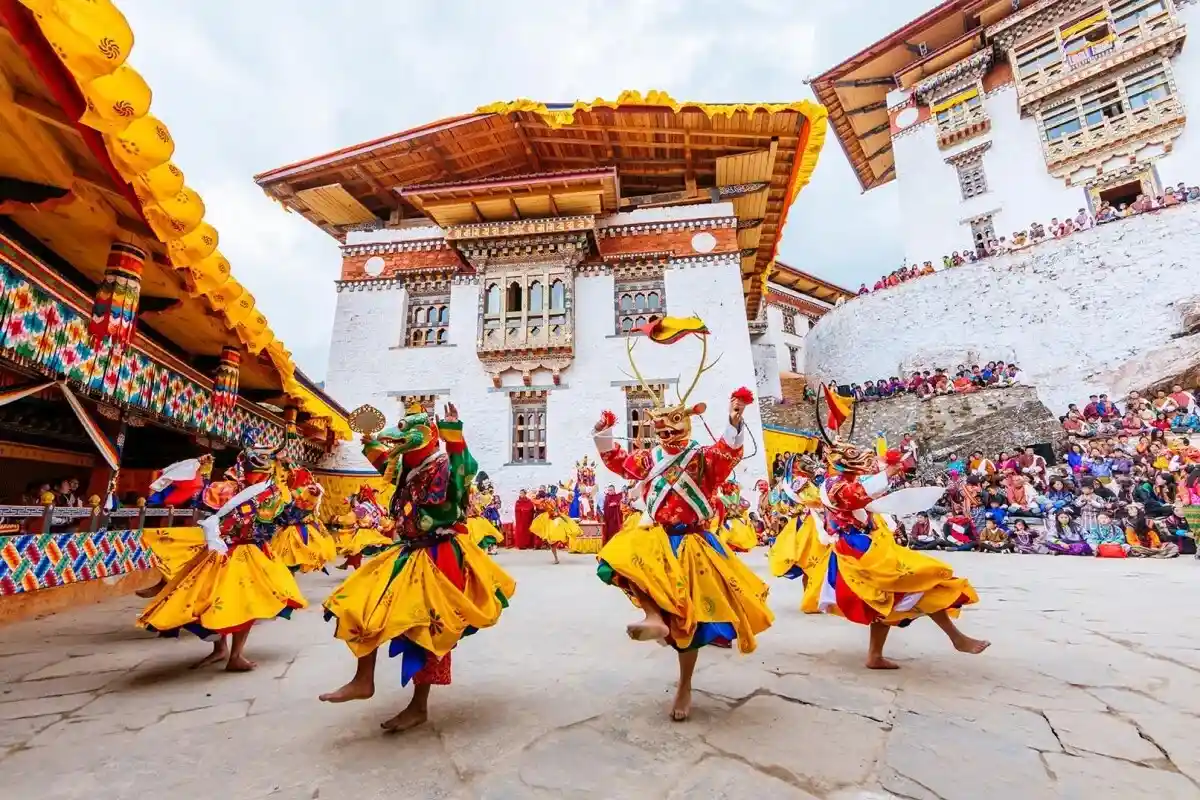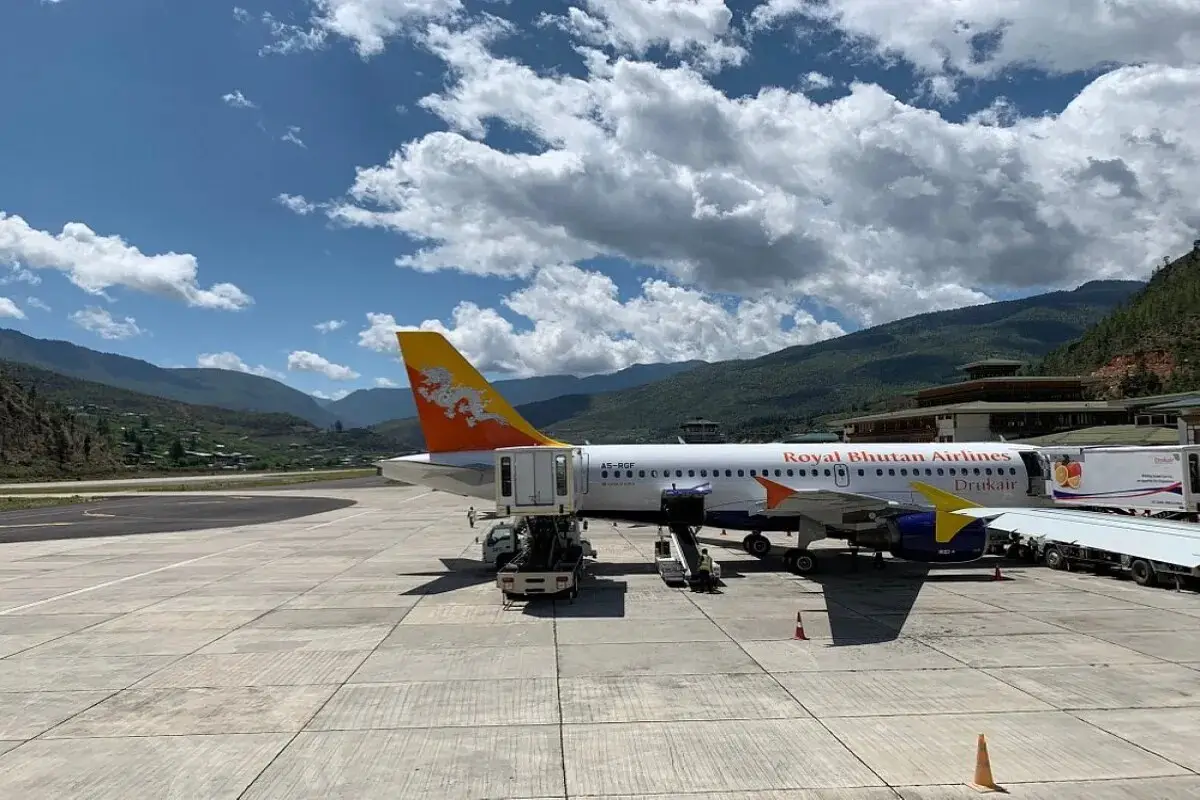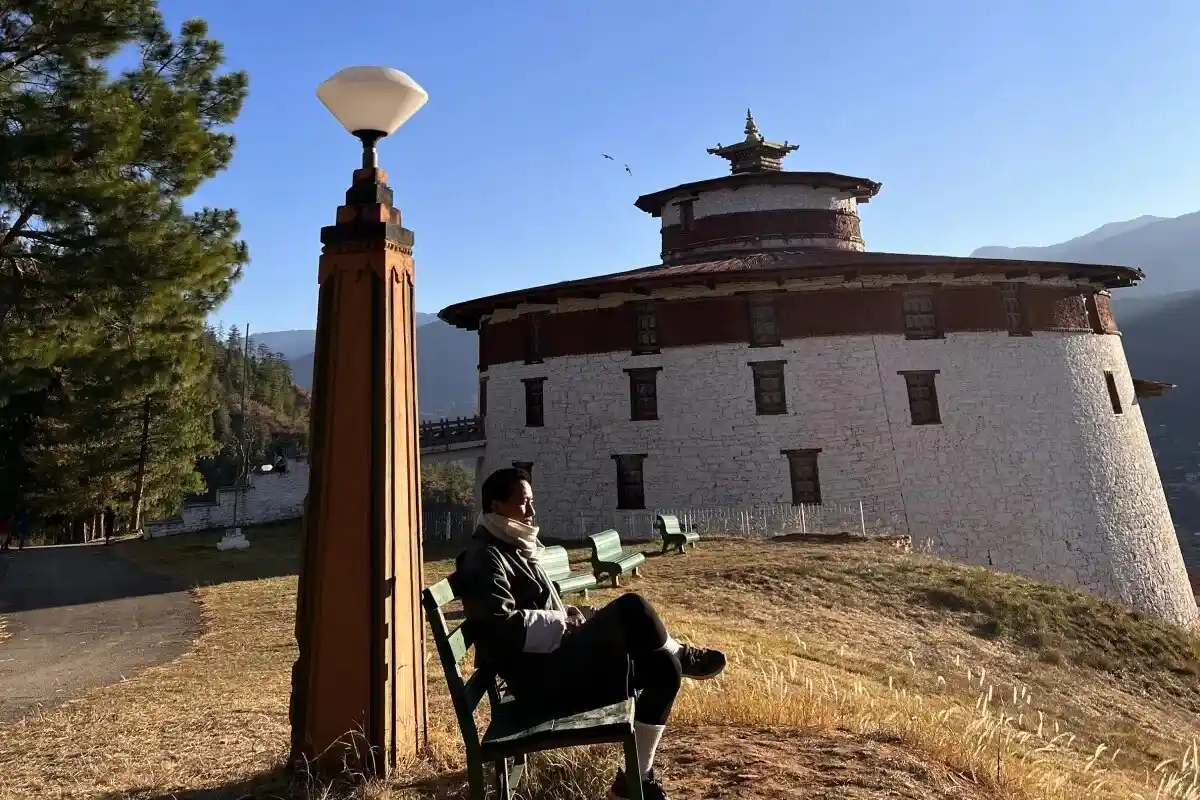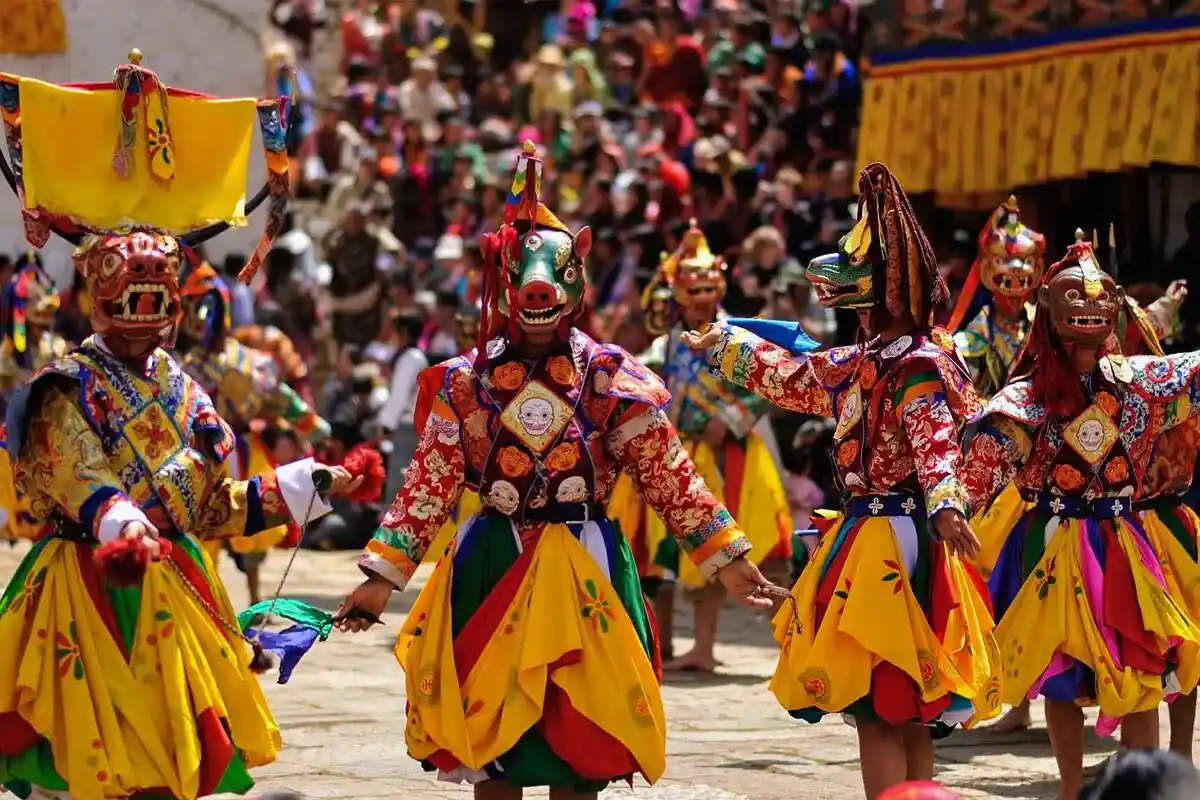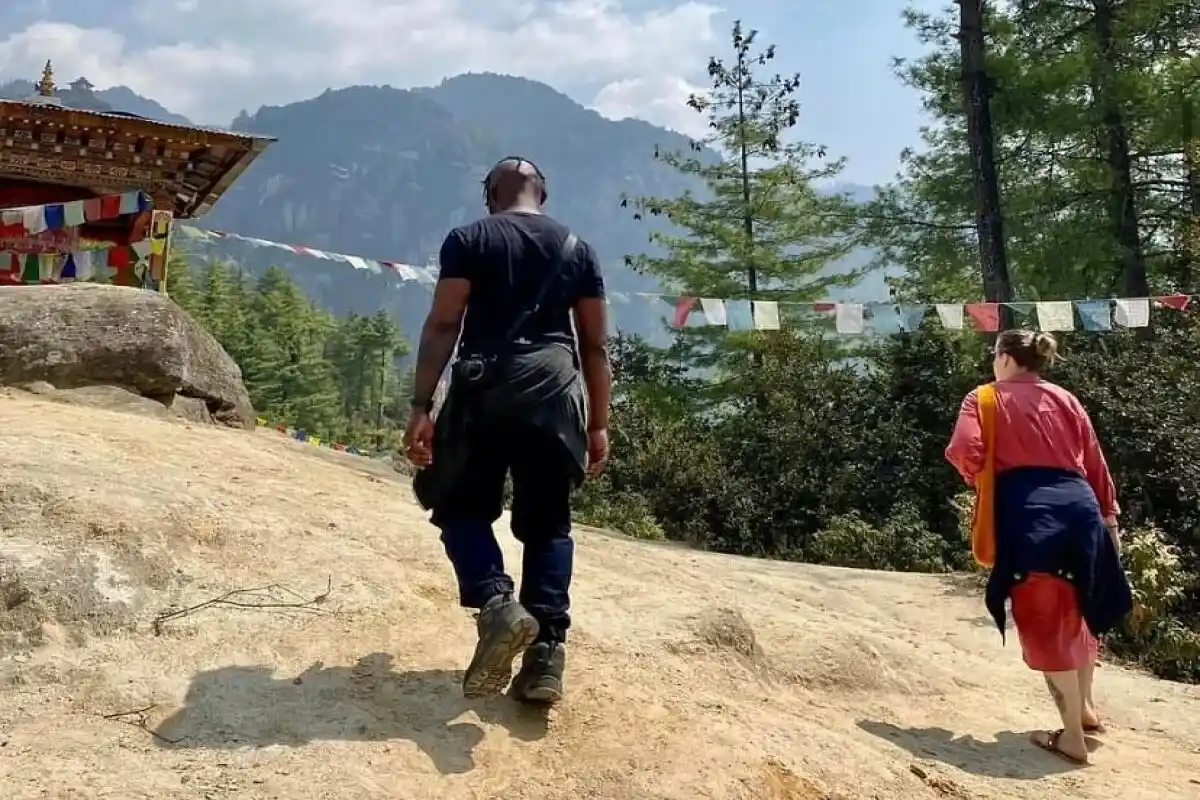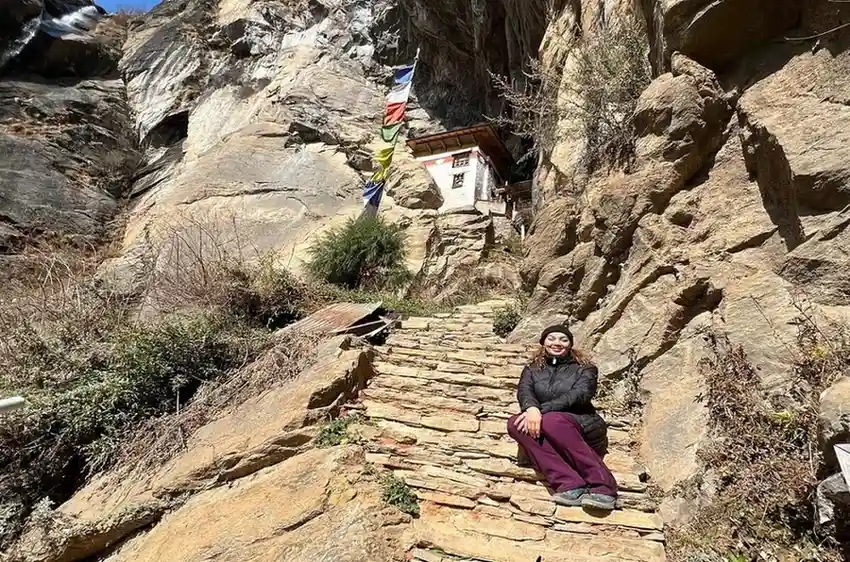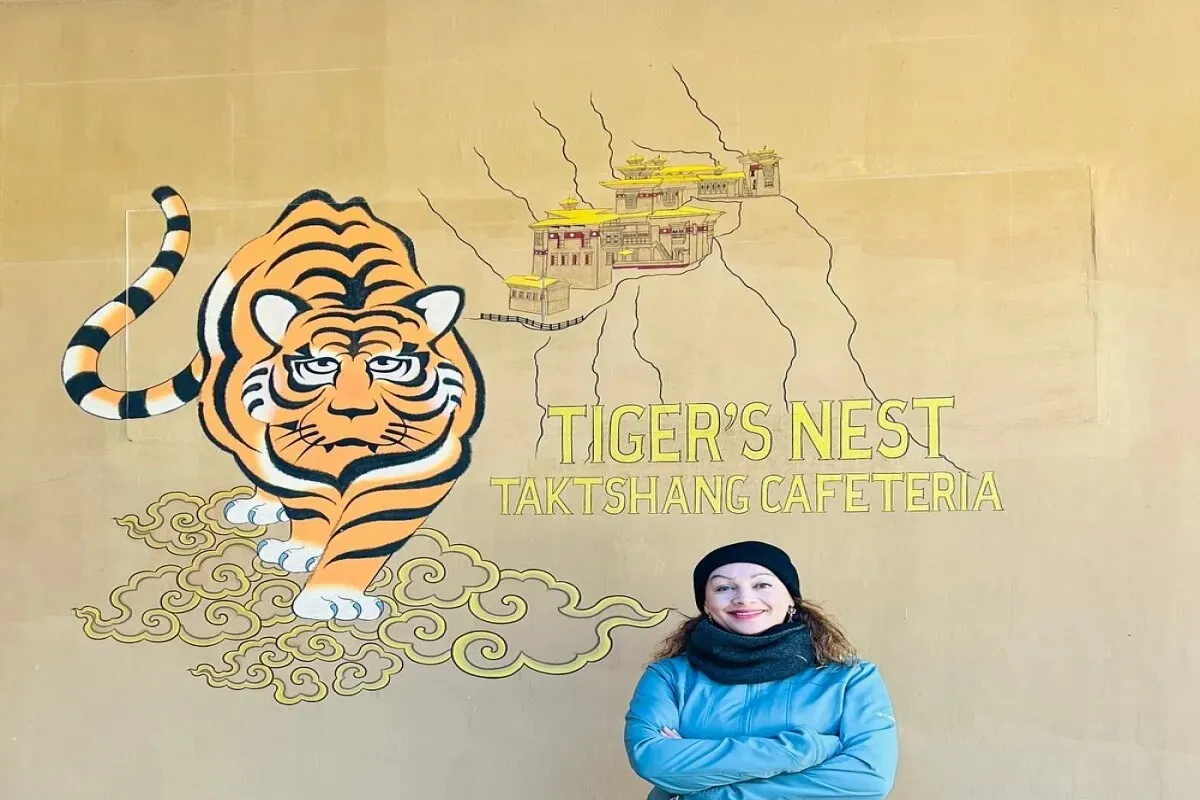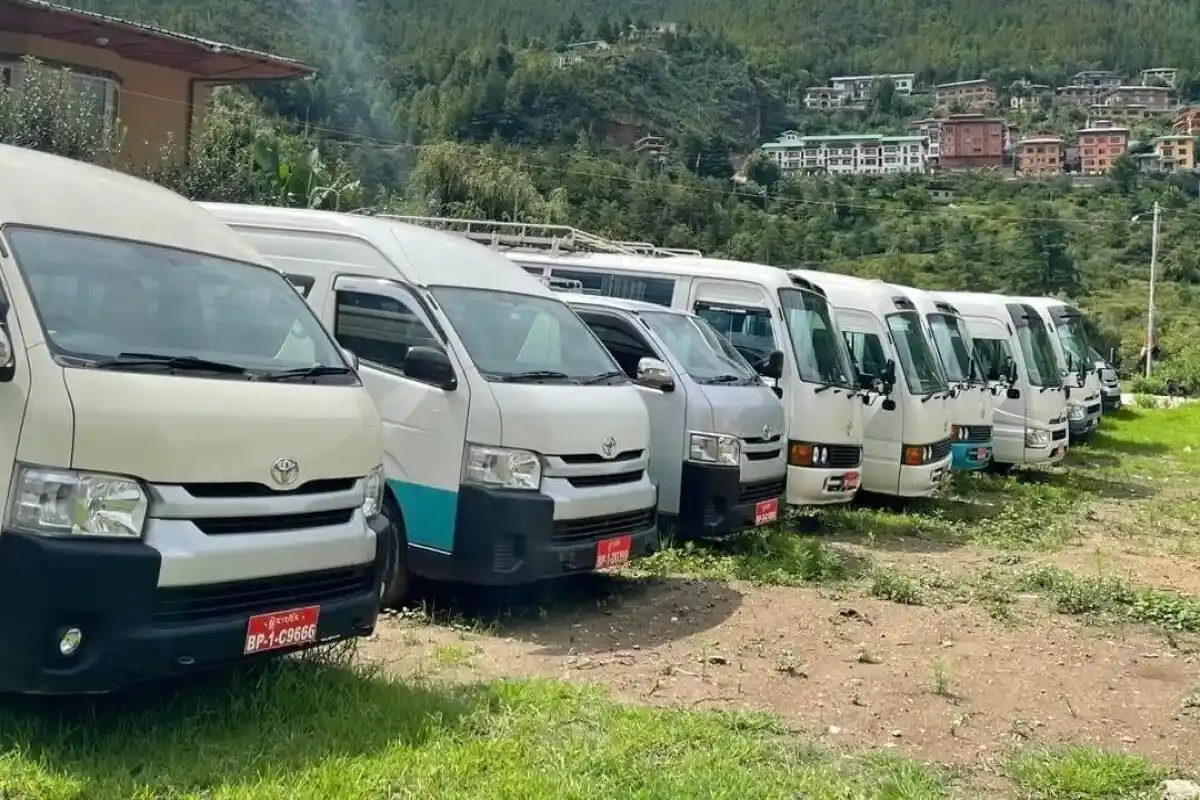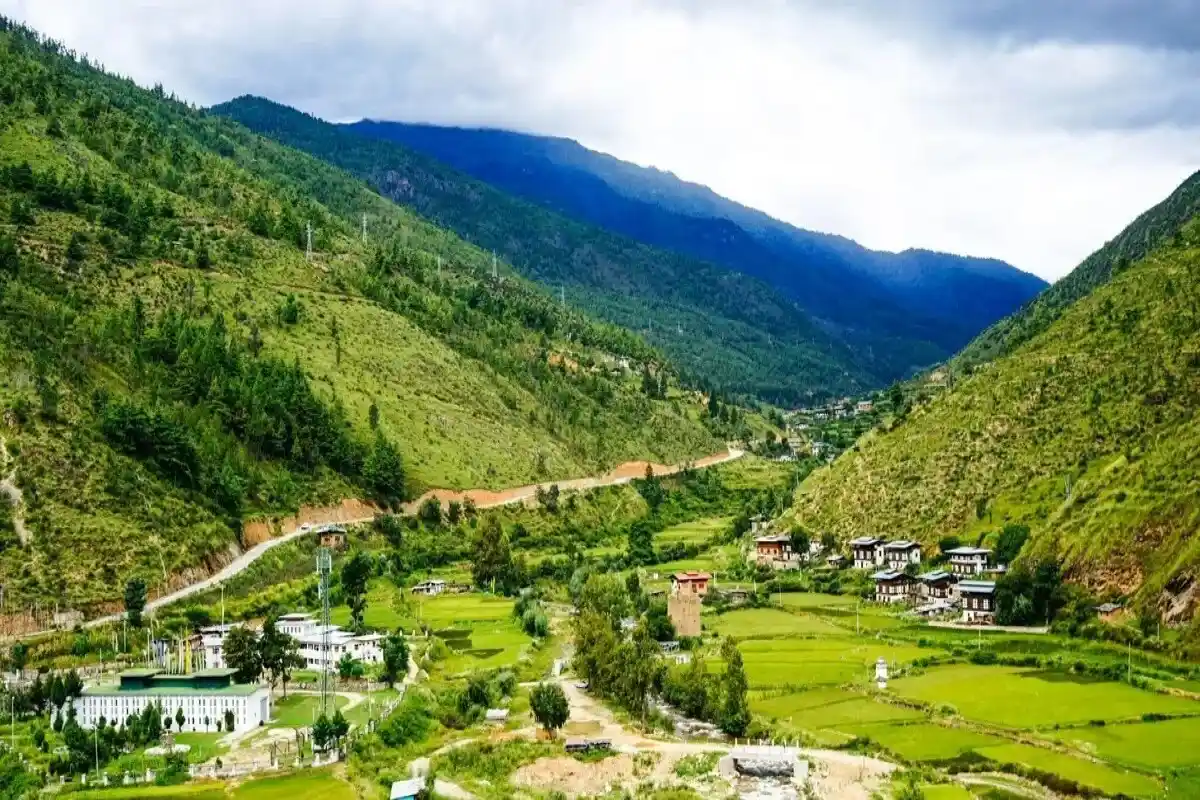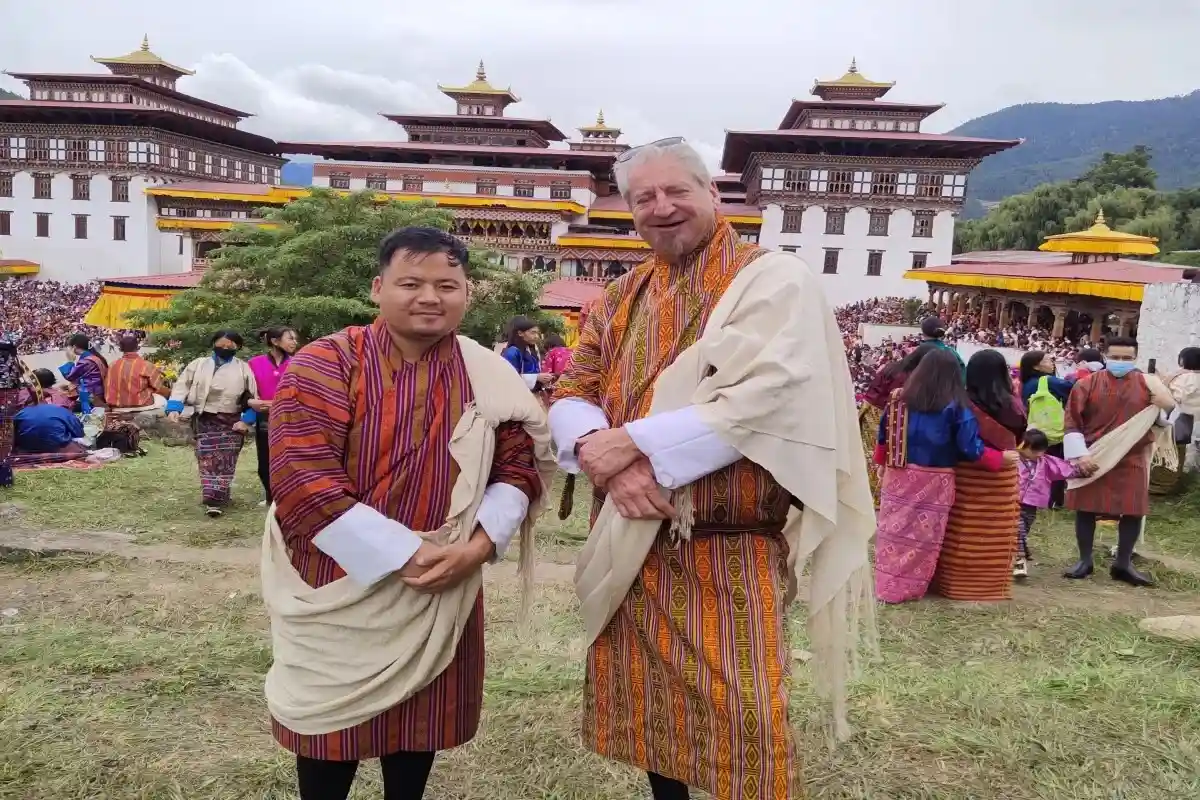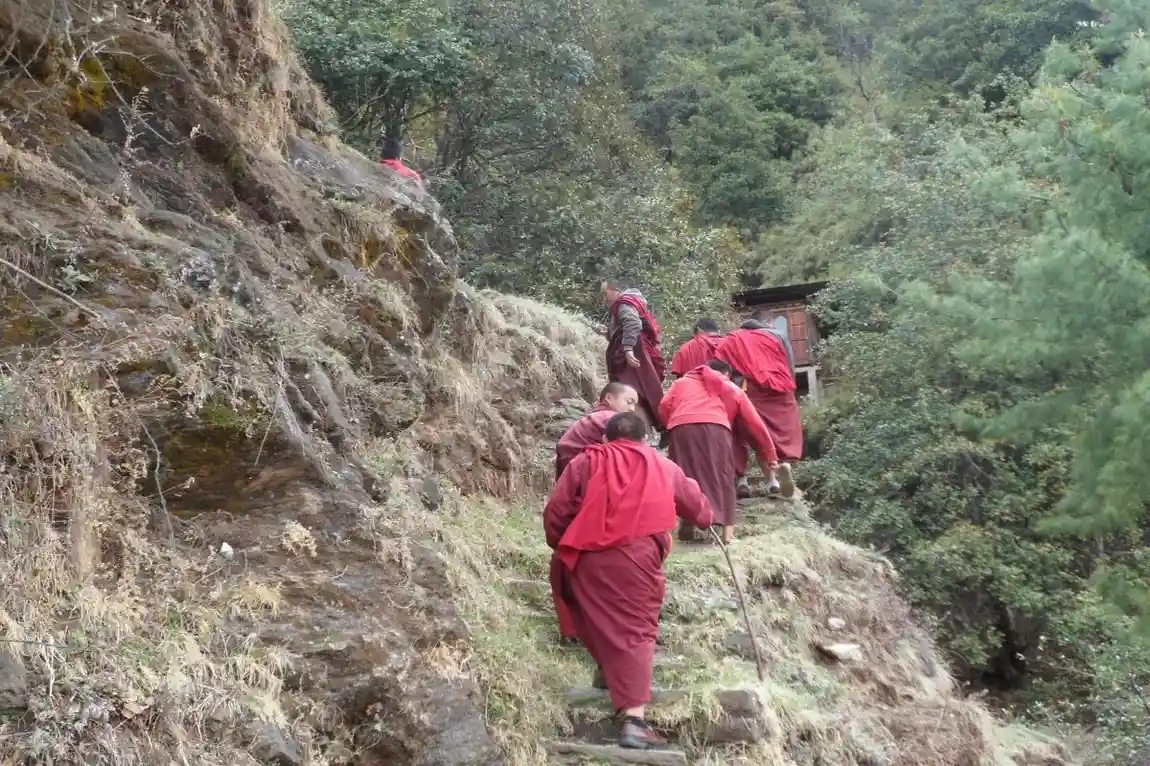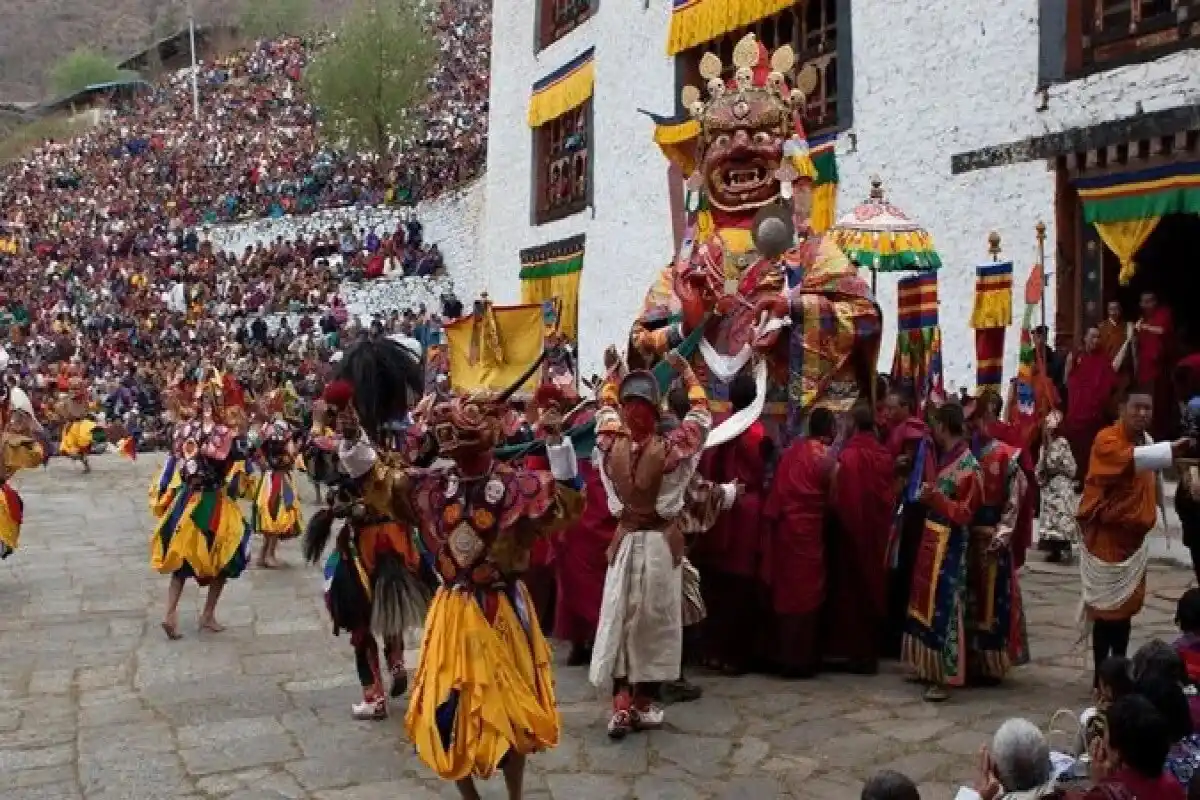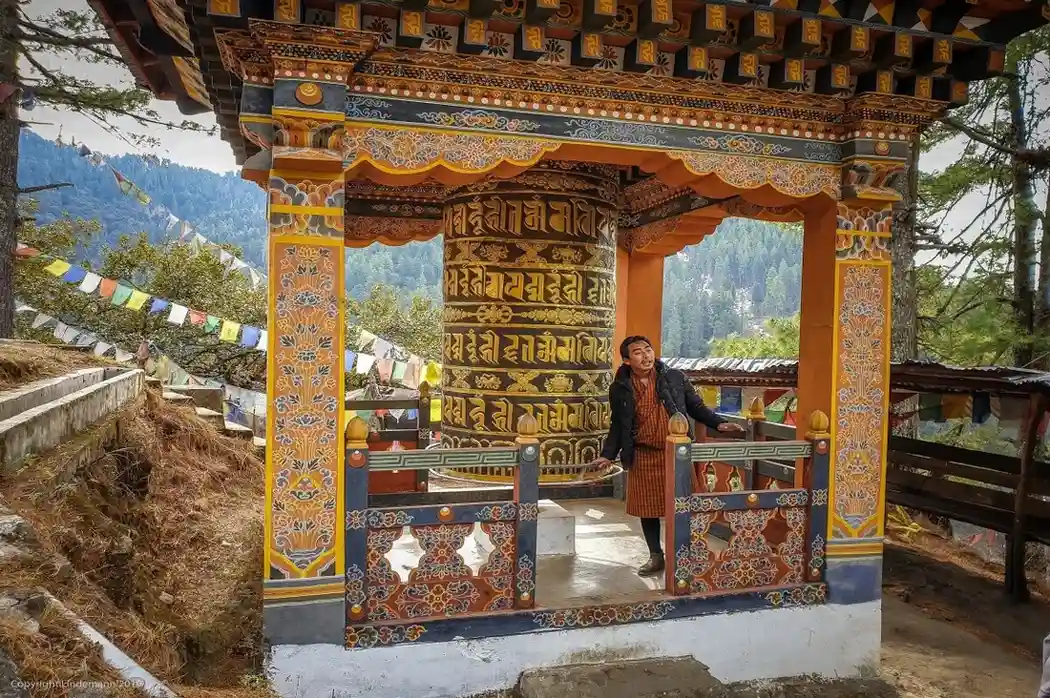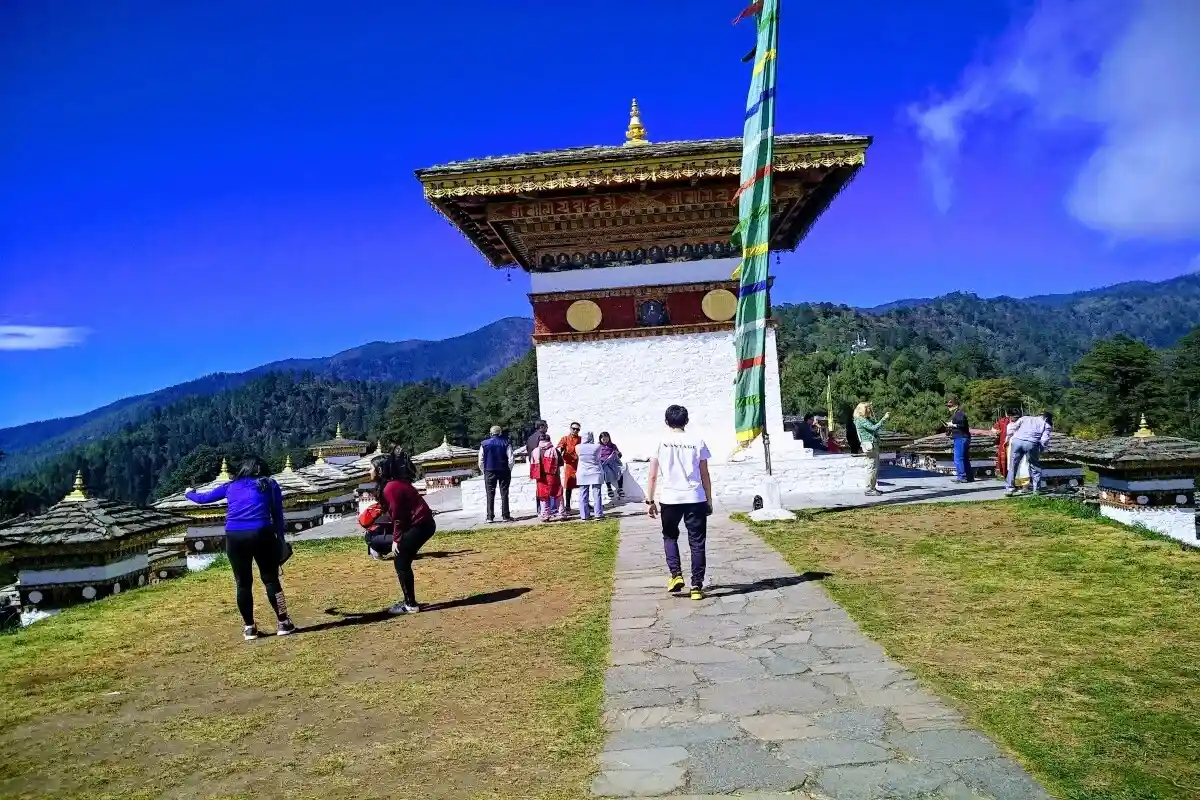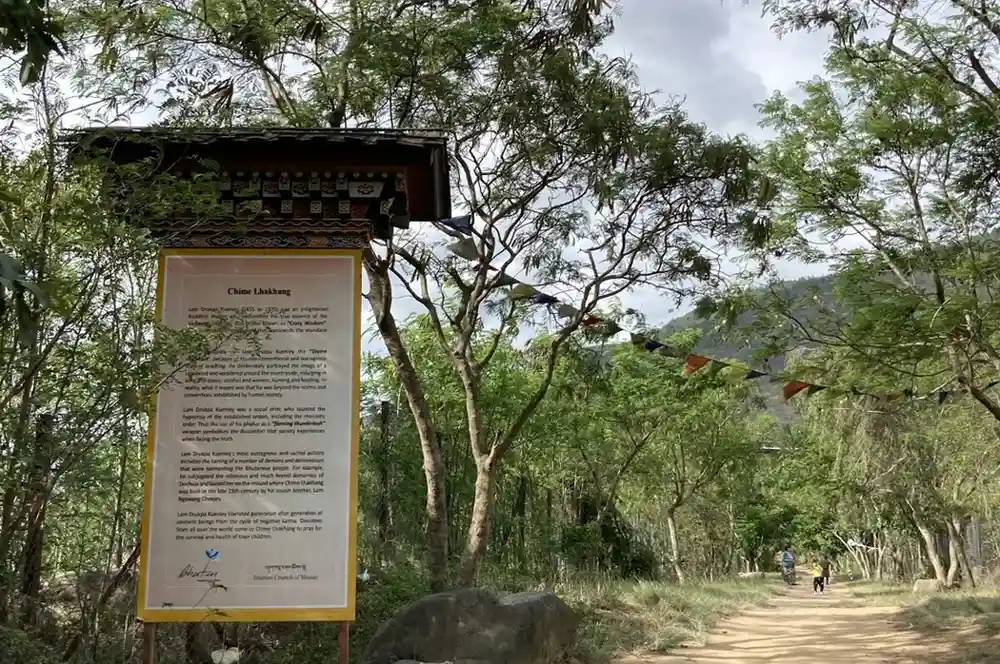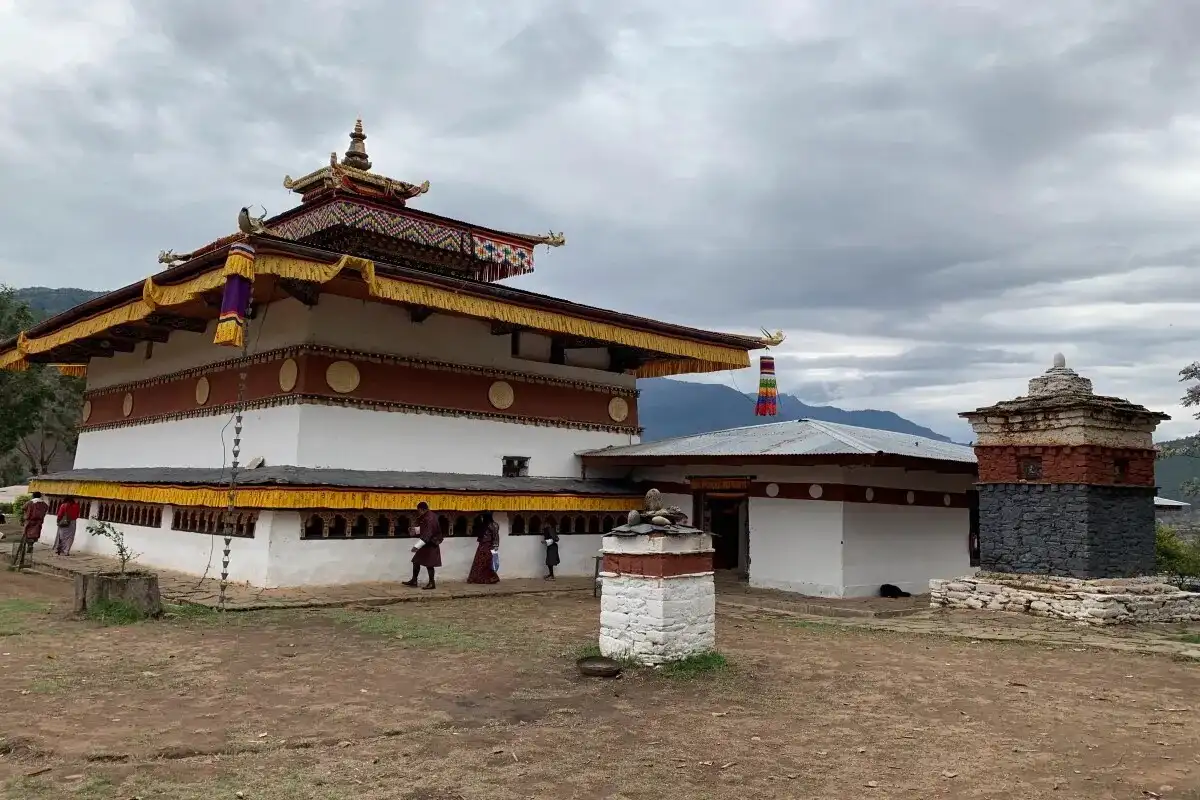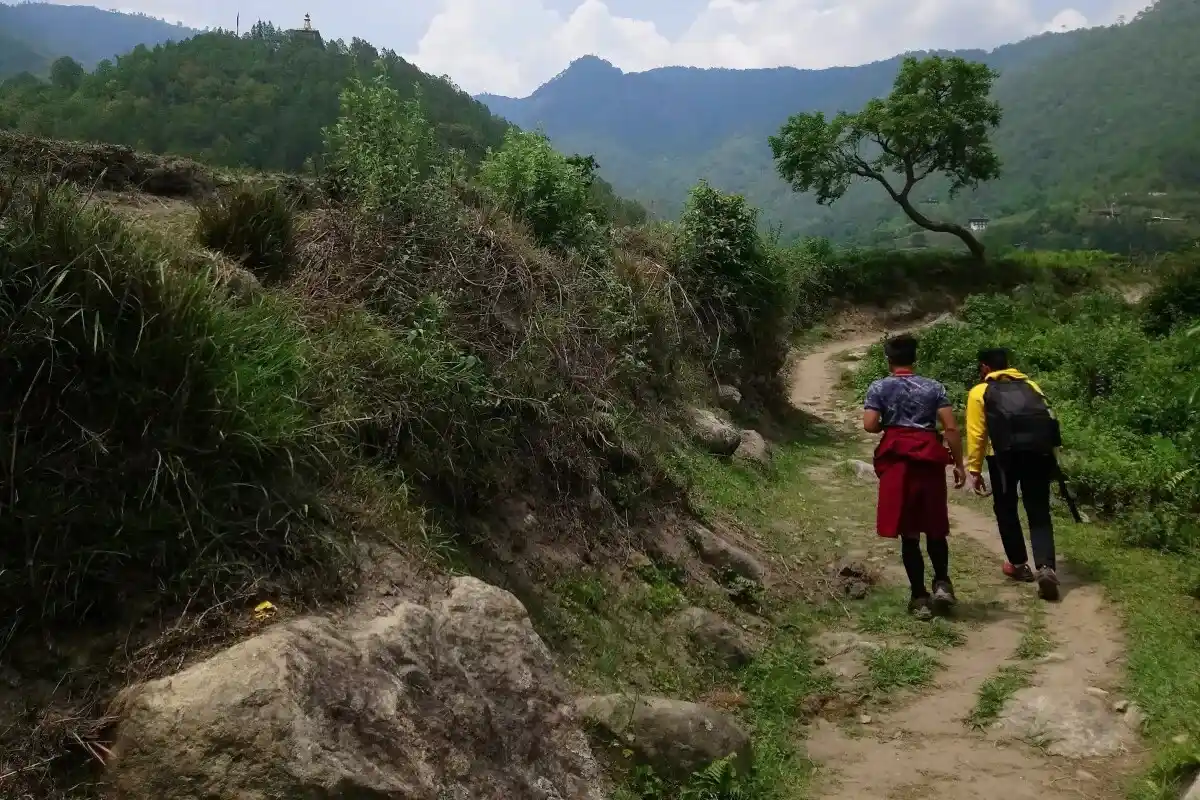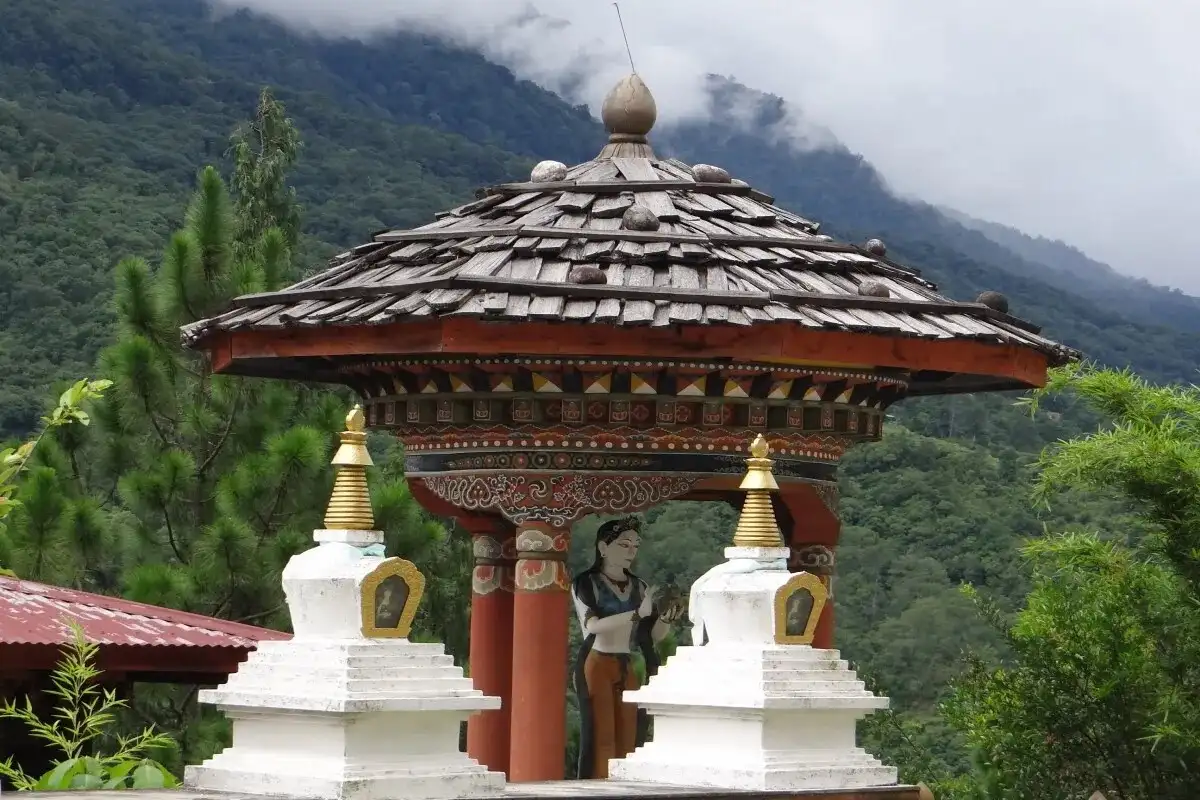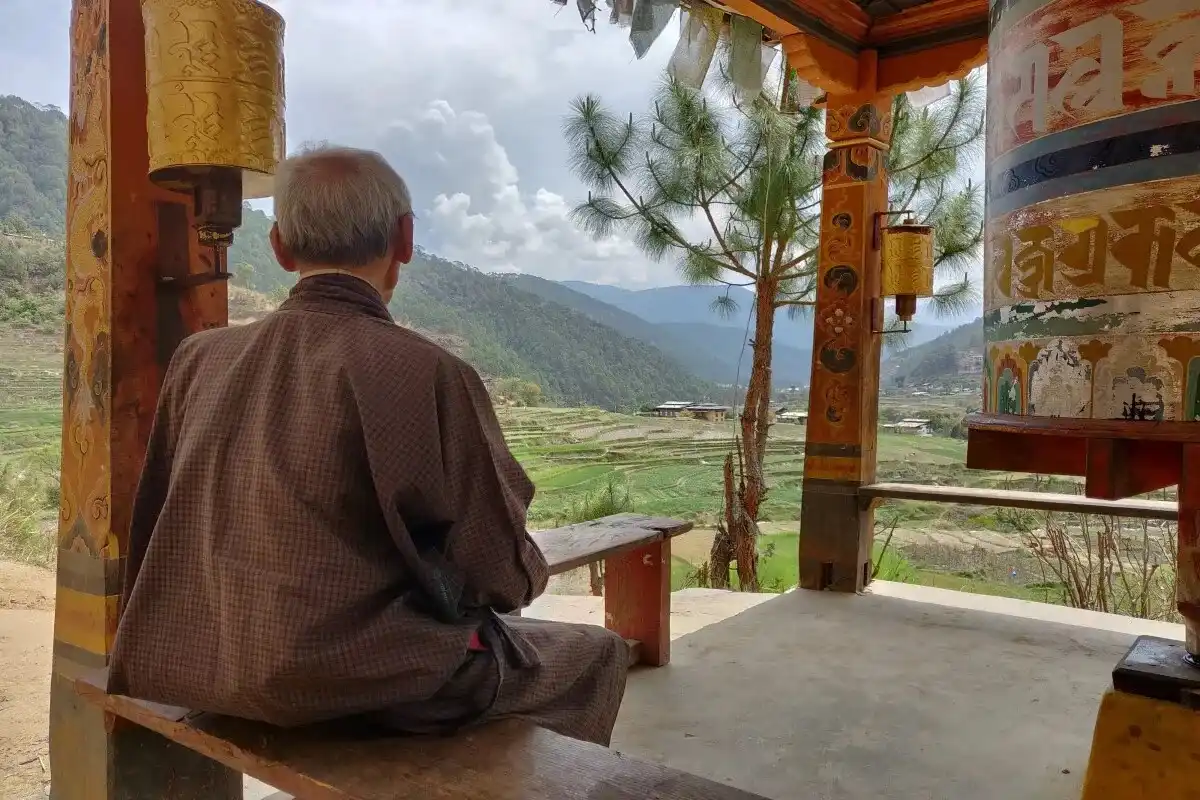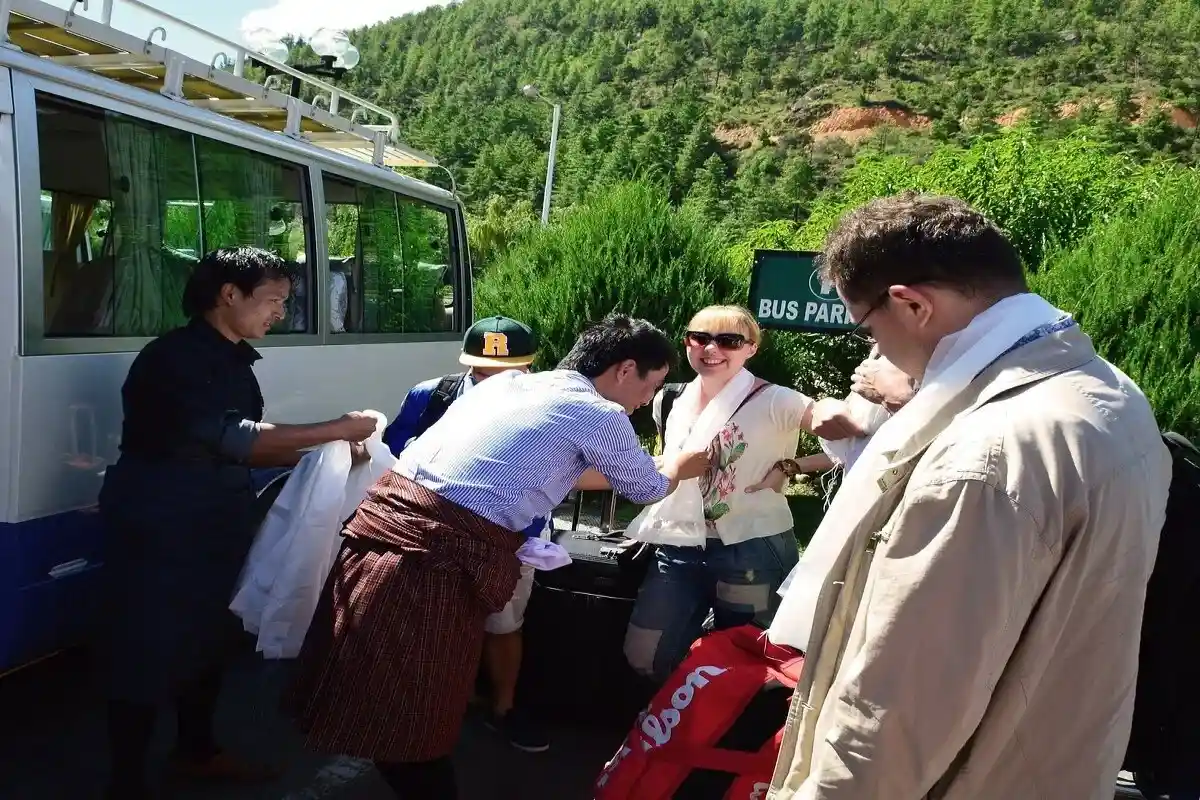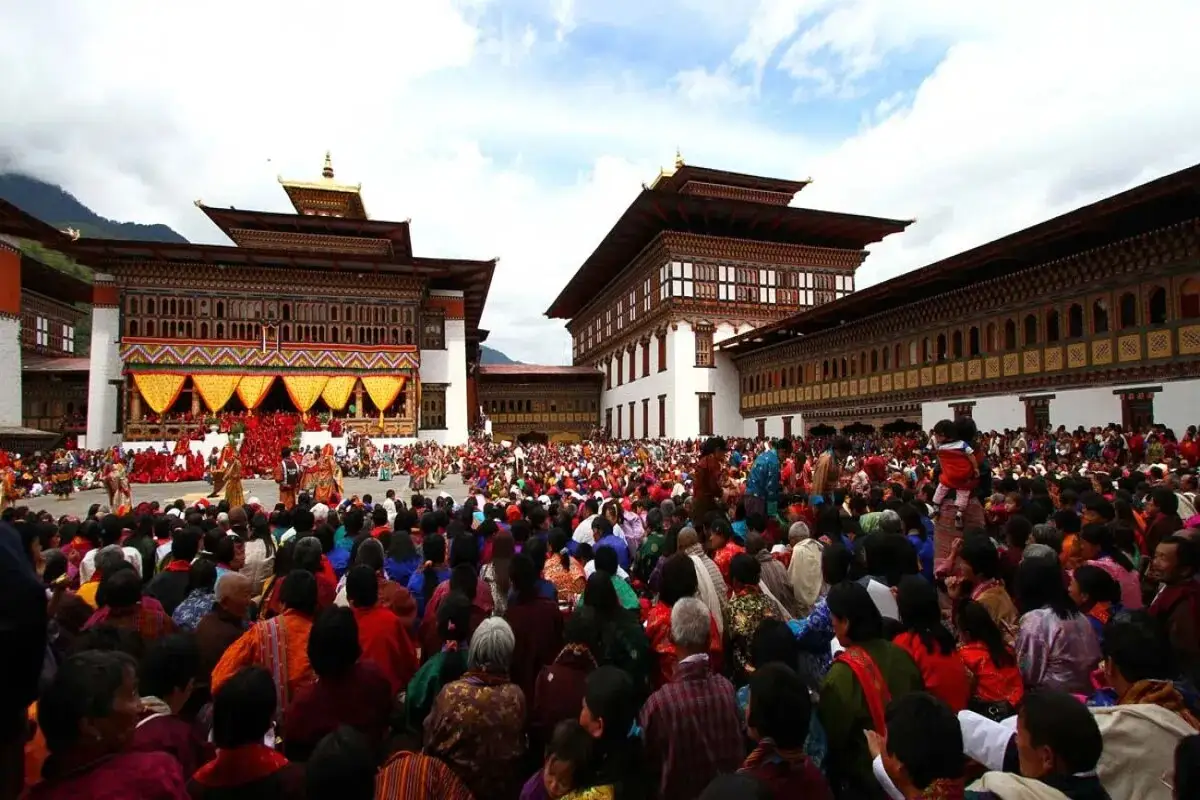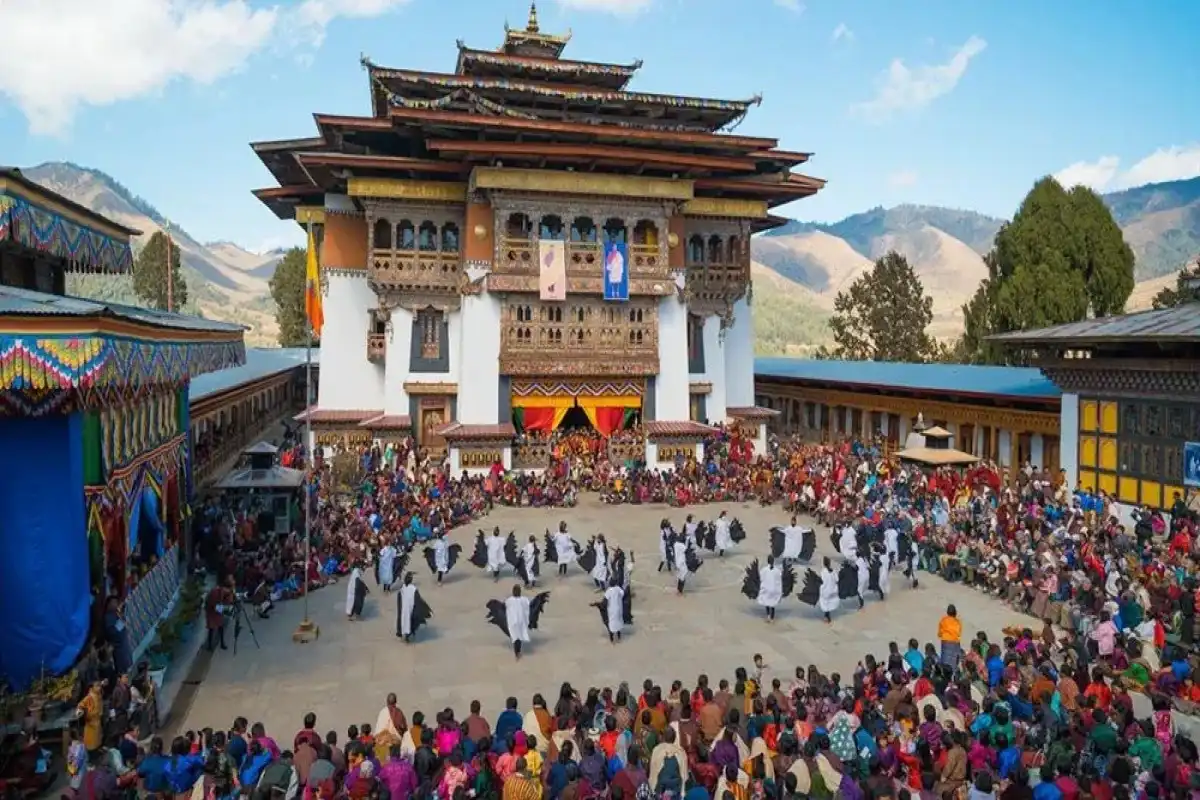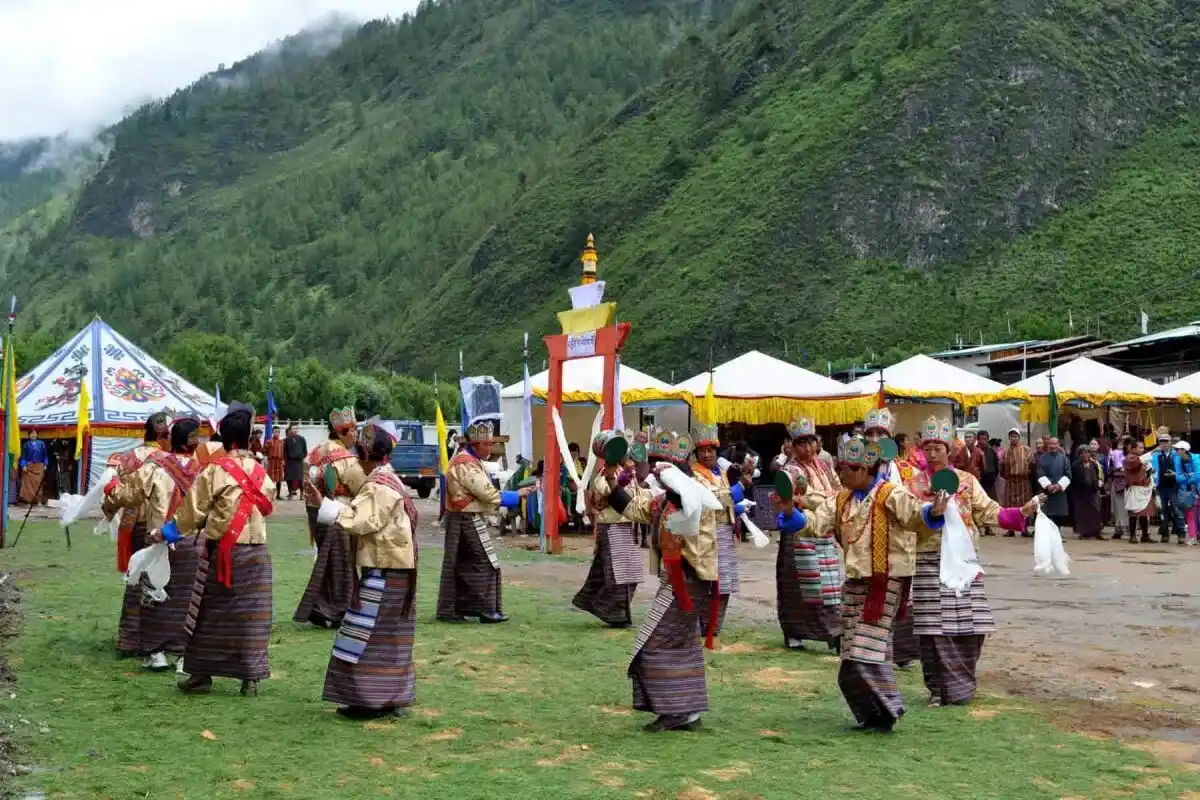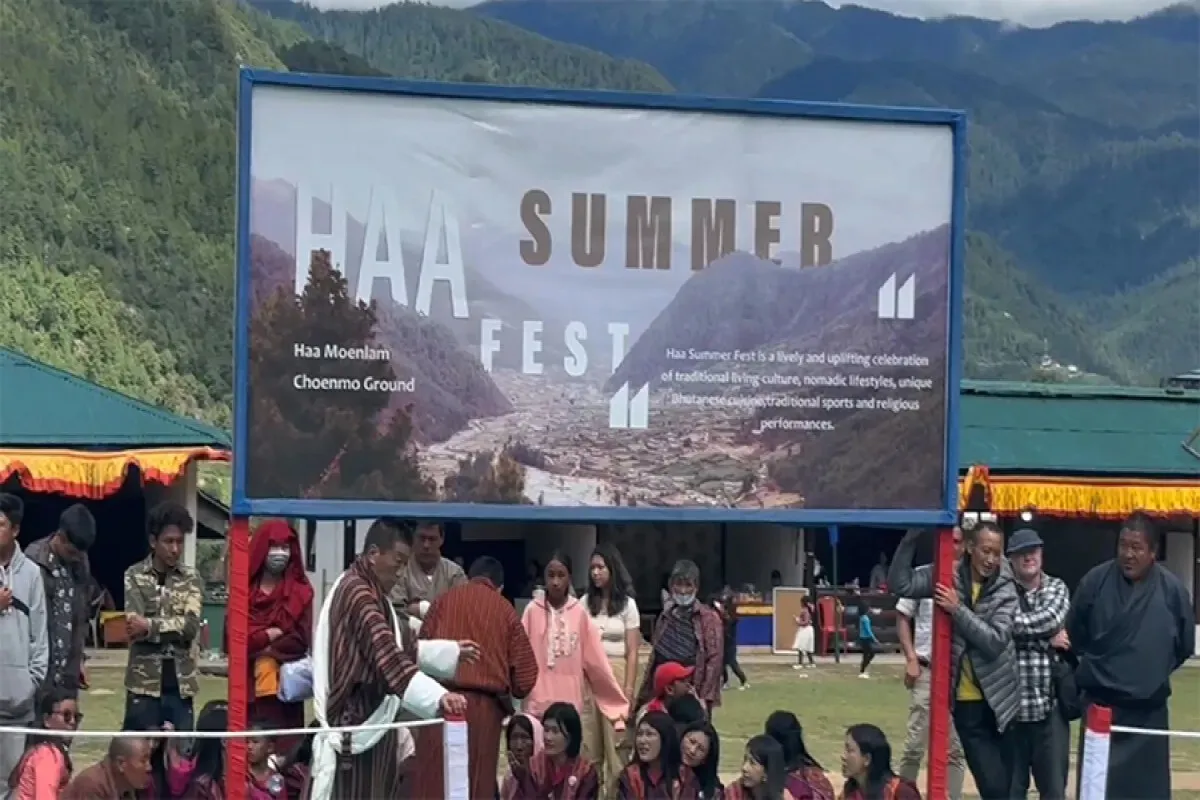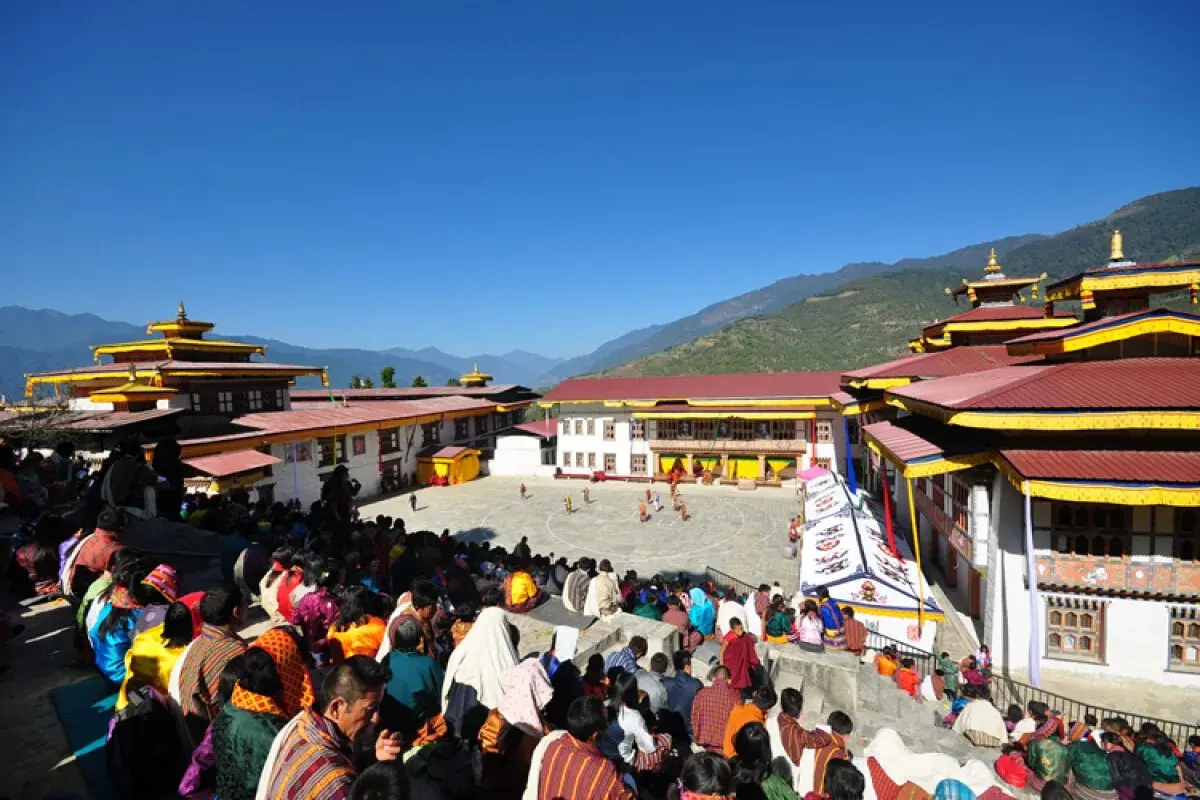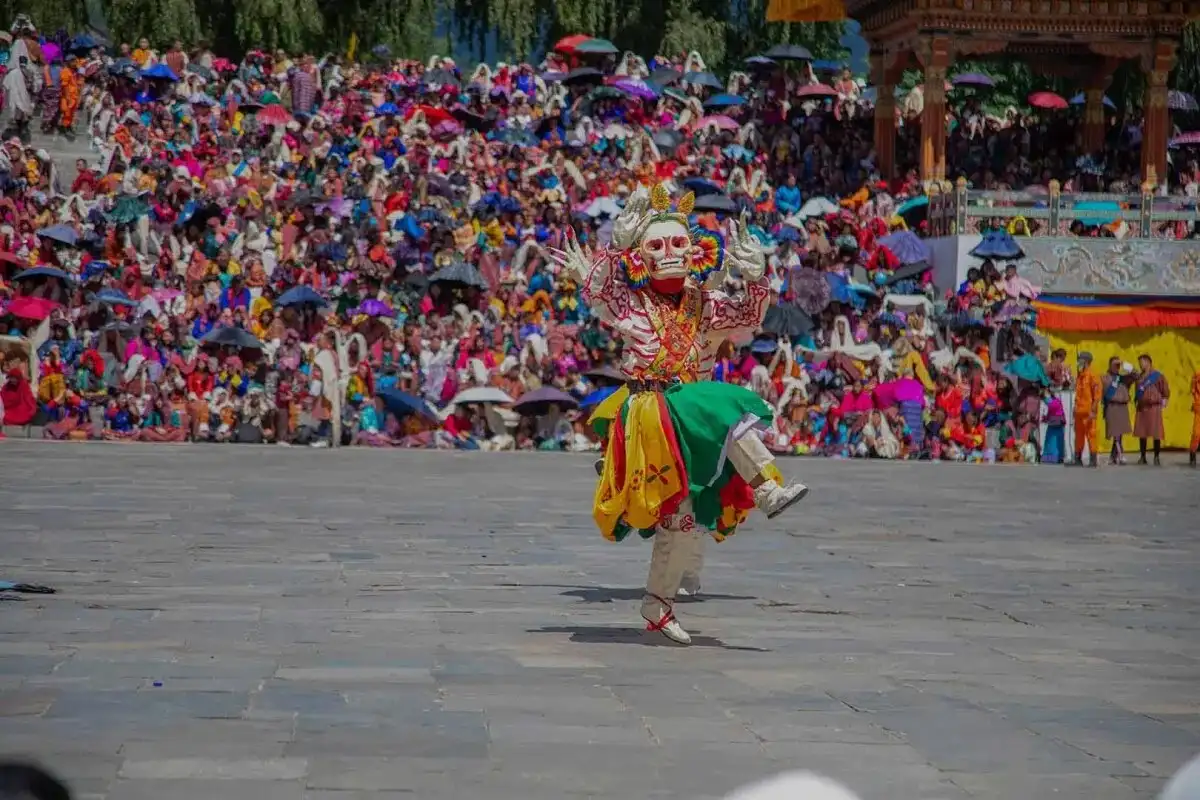Paro Tsechu Festival Tour - 9 Days
The Paro Tsechu Festival Tour is one of the most colorful and spiritually rewarding tour packages offered in Bhutan. It is regarded as one of the largest festivals of Bhutan. During this 9-day Bhutan Paro Tsechu Festival tour, you will be visiting Bhutanese customs and traditions. You will be close to religion, community, and dance.
Highlights of the tour
Trip Overview
The Paro Tsechu Festival is celebrated by people because of the arrival of Guru Rinpoche. This is due to the fact that Guru Rinpoche brought Buddhism to Bhutan. Special mask dances, spiritual rites, and social gatherings may be seen by the visitors. During these events, the people put on their finest national dress. These events make the people dress in the best national dress. In this tour, you will witness the famous places and beautiful spots in Bhutan. For example, Punakha Dzong, Rinpung Dzong, Taktsang Monastery (Tiger nest), and other cultural sites in Thimphu. The trip is a good experience for any travel enthusiast.
Highlights of the Paro Tsechu Festival
Experience the most iconic Paro Tsechu Festival in this 9 days trip. You will get to explore different sacred monastries and sites , along with this you will get a chance to dressed up in a local traditional customes.
Experience the Sacred Dances and Rituals during the Paro Tsechu Festival
You will get the chance to enjoy and experience the holy Cham dances in the Paro Tsechu Festival, which will show the Bhutanese tradition. These mask dances are danced by monks as well as locals in beautiful costumes. These dances are inherently faith-oriented in their meaning. They illustrate storylines about good triumphing over evil. There is an aura of chanting, drumming, as well as folk musical instruments. A spiritual experience, when you attend such rituals, you are connected with the great Buddhist legacy of Bhutan.
Visit Tiger’s Nest Monastery (Paro Taktsang)
Tiger’s Nest Monastery is also known as Taktsang Monastery. It is considered a popular destination for visitors in Bhutan. Adventure and spirituality are mixed at this holy site that is perched on the cliff.
Experience the Thongdroel Ceremony
There is no event more holy in the festival than the Thongdroel Ceremony. A giant Buddhist thangka, known as Thongdroel, is unfurled in the early morning. In Bhutan, people think that seeing it brings blessings and cleanses sins. To witness such an occasion once in a lifetime is seen as a once-in-a-lifetime cleansing experience.
Experience Historical Sites
There are various historical sites in Bhutan that you will see in the Paro Tsechu Festival tour. One of them is the Rinpung Dzong. It is a monastery as well as a fortress. In addition, you will find the ancient conserved heritage of Bhutan in the Bhutan National Museum, Ta Dzong. Other significant sites are Kyichu Lhakhang and Taktsang Manastery(Tiger’s Nest). These sites illustrate the culture, tradition, architecture, and history of Bhutan.
Cultural Interaction with Locals in Traditional Attire
The festival is also a community reunion where people wear their best ethnic attire. Gho for men and kira for women. There is a happy mood with families and friends gathering, eating meals together, as well as watching performances. Connecting with locals in their bright clothing lets you understand Bhutanese life and hospitality. The Paro Tshechu Festival is more than a religious event. It’s a community celebration too.
Cultural & Spiritual Sites to visit during the Paro Tshechu Festival tour.
There are popular cultural and spiritual, and sacred locations to visit in Bhutan during this Paro Tshechu Festival tour. Some of the most famous sites that you will find in Thimphu are the Folk Heritage Museum, the Institute for Zorig Chusum (Painting School), the Buddha Dordenma Statue, and Tashichho Dzong. Popular sites in Punakha are Chimi Lhakhang (Fertility Temple), Punakha Suspension Bridge, and Punakha Dzong. Furthermore, Paro includes popular sites like Paro Taktsang Monastery (Tiger’s Nest), Rinpung Dzong, and Ta Dzong (National Museum). All of them illustrate the Buddhist philosophy, the unique Bhutan architecture, and the beautiful nature. These locations will make you feel appreciation for the Bhutanese culture.
What kinds of activities are held during the Paro Tshechu Festival?
The Paro Tshechu Festival is a cultural and spiritually-filled festival. The Cham dances are famous. In these dances, monks wear sacred masks. They tell stories about Buddhism. There is also another event- the grand unfurling of the Thongdroel Thangka. Bhutanese think that it is goodwill. The Paro Tshechu Festival can provide tourists with the opportunity to browse antique clothing, listen to local music, and prepare delicious food. This includes rice dishes, meat dishes, and butter tea served in Paro. It is religious and festive with folk songs, social events, and offerings at monasteries.
Significance of the Paro Tsechu Festival
The Paro Tsechu Festival has religious and cultural significance. Firstly, it is celebrated spiritually, dedicating Guru Rinpoche as he has brought Buddhism to Bhutan. It is a religious belief that people will receive blessings if they attend and witness the holy mask dances. Not only these sacred mask dances, but also the Thongdrel celebrated on the last day are believed to make you free from sins. On the other hand, this festival protects the Bhutanese culture, tradition, and rituals. It also brings people from different corners together to celebrate and socialise. It also portrays the vivid Bhutanese traditions like mask dance and other performances.
Conclusion
The Paro Tsechu Festival Tour is not only a tour, it is a trip into the core of Bhutanese culture, tradition, and spirituality. This festival strengthens the deep connection between people and faith. It provides a sense of communal unity. You will observe religious ceremonies, visit historic monasteries, and meet local people on the 9-day tour. You can experience spirituality, cultures, and interaction with locals at the same time. You will witness the masked dances of Paro Tshechu. You will also experience the serene hike to the Tiger’s Nest and the fortress, Punakha Dzong. This tour welcomes any kind of tourist, whether you are a festival, a cultural traveler, or a spiritual seeker. It is a rare opportunity to witness the living traditions of Bhutan.
The Paro Tsechu Festival is celebrated by people because of the arrival of Guru Rinpoche. This is due to the fact that Guru Rinpoche brought Buddhism to Bhutan. Special mask dances, spiritual rites, and social gatherings may be seen by the visitors. During these events, the people put on their finest national dress. These events make the people dress in the best national dress. In this tour, you will witness the famous places and beautiful spots in Bhutan. For example, Punakha Dzong, Rinpung Dzong, Taktsang Monastery (Tiger nest), and other cultural sites in Thimphu. The trip is a good experience for any travel enthusiast.
Highlights of the Paro Tsechu Festival
Experience the most iconic Paro Tsechu Festival in this 9 days trip. You will get to explore different sacred monastries and sites , along with this you will get a chance to dressed up in a local traditional customes.
Experience the Sacred Dances and Rituals during the Paro Tsechu Festival
You will get the chance to enjoy and experience the holy Cham dances in the Paro Tsechu Festival, which will show the Bhutanese tradition. These mask dances are danced by monks as well as locals in beautiful costumes. These dances are inherently faith-oriented in their meaning. They illustrate storylines about good triumphing over evil. There is an aura of chanting, drumming, as well as folk musical instruments. A spiritual experience, when you attend such rituals, you are connected with the great Buddhist legacy of Bhutan.
Visit Tiger’s Nest Monastery (Paro Taktsang)
Tiger’s Nest Monastery is also known as Taktsang Monastery. It is considered a popular destination for visitors in Bhutan. Adventure and spirituality are mixed at this holy site that is perched on the cliff.
Experience the Thongdroel Ceremony
There is no event more holy in the festival than the Thongdroel Ceremony. A giant Buddhist thangka, known as Thongdroel, is unfurled in the early morning. In Bhutan, people think that seeing it brings blessings and cleanses sins. To witness such an occasion once in a lifetime is seen as a once-in-a-lifetime cleansing experience.
Experience Historical Sites
There are various historical sites in Bhutan that you will see in the Paro Tsechu Festival tour. One of them is the Rinpung Dzong. It is a monastery as well as a fortress. In addition, you will find the ancient conserved heritage of Bhutan in the Bhutan National Museum, Ta Dzong. Other significant sites are Kyichu Lhakhang and Taktsang Manastery(Tiger’s Nest). These sites illustrate the culture, tradition, architecture, and history of Bhutan.
Cultural Interaction with Locals in Traditional Attire
The festival is also a community reunion where people wear their best ethnic attire. Gho for men and kira for women. There is a happy mood with families and friends gathering, eating meals together, as well as watching performances. Connecting with locals in their bright clothing lets you understand Bhutanese life and hospitality. The Paro Tshechu Festival is more than a religious event. It’s a community celebration too.
Cultural & Spiritual Sites to visit during the Paro Tshechu Festival tour.
There are popular cultural and spiritual, and sacred locations to visit in Bhutan during this Paro Tshechu Festival tour. Some of the most famous sites that you will find in Thimphu are the Folk Heritage Museum, the Institute for Zorig Chusum (Painting School), the Buddha Dordenma Statue, and Tashichho Dzong. Popular sites in Punakha are Chimi Lhakhang (Fertility Temple), Punakha Suspension Bridge, and Punakha Dzong. Furthermore, Paro includes popular sites like Paro Taktsang Monastery (Tiger’s Nest), Rinpung Dzong, and Ta Dzong (National Museum). All of them illustrate the Buddhist philosophy, the unique Bhutan architecture, and the beautiful nature. These locations will make you feel appreciation for the Bhutanese culture.
What kinds of activities are held during the Paro Tshechu Festival?
The Paro Tshechu Festival is a cultural and spiritually-filled festival. The Cham dances are famous. In these dances, monks wear sacred masks. They tell stories about Buddhism. There is also another event- the grand unfurling of the Thongdroel Thangka. Bhutanese think that it is goodwill. The Paro Tshechu Festival can provide tourists with the opportunity to browse antique clothing, listen to local music, and prepare delicious food. This includes rice dishes, meat dishes, and butter tea served in Paro. It is religious and festive with folk songs, social events, and offerings at monasteries.
Significance of the Paro Tsechu Festival
The Paro Tsechu Festival has religious and cultural significance. Firstly, it is celebrated spiritually, dedicating Guru Rinpoche as he has brought Buddhism to Bhutan. It is a religious belief that people will receive blessings if they attend and witness the holy mask dances. Not only these sacred mask dances, but also the Thongdrel celebrated on the last day are believed to make you free from sins. On the other hand, this festival protects the Bhutanese culture, tradition, and rituals. It also brings people from different corners together to celebrate and socialise. It also portrays the vivid Bhutanese traditions like mask dance and other performances.
Conclusion
The Paro Tsechu Festival Tour is not only a tour, it is a trip into the core of Bhutanese culture, tradition, and spirituality. This festival strengthens the deep connection between people and faith. It provides a sense of communal unity. You will observe religious ceremonies, visit historic monasteries, and meet local people on the 9-day tour. You can experience spirituality, cultures, and interaction with locals at the same time. You will witness the masked dances of Paro Tshechu. You will also experience the serene hike to the Tiger’s Nest and the fortress, Punakha Dzong. This tour welcomes any kind of tourist, whether you are a festival, a cultural traveler, or a spiritual seeker. It is a rare opportunity to witness the living traditions of Bhutan.
Short Itinerary
Arrive in Paro, visit National Museum and Rinpung Dzong, welcome dinner
Full-day Paro Tshechu Festival at Rinpung Dzong, explore Paro town
Hike to Taktsang (Tiger’s Nest) Monastery, meditation and valley views
Attend Thongdroel Ceremony, scenic drive to Thimphu
Sightseeing in Thimphu – Tashichho Dzong, Heritage and Textile Museums, Buddha Dordenma
Forest hike to Tango Monastery, interact with monks, return to Thimphu
Drive to Punakha via Dochula Pass, visit Chimi Lhakhang and Punakha Dzong
Hike to Khamsum Yulley Namgyal Chorten, return to Paro, shopping and leisure
Departure from Paro with farewell
Paro Tsechu Festival Tour Itinerary
Landing at the Paro International Airport is the first point of destination. It is said to be one of the most beautiful airports in the world. The guide will welcome you and involve him/herself on a brief drive to Paro Valley, which is full of green hills and traditional houses. You can have a quick but amazing sightseeing during the drive. Your tour will initiate at the National Museum (Ta Dzong). It is a fort, which was constructed to defend against Tibet and India in the seventeenth century. It presents religious items, objects and textiles that underscore the wealth of Bhutan. Then you will have a walk around Rinpung Dzong. This fort blends stunning architecture with deep spiritual meaning. The evening is for free rest and a welcome dinner.
This whole day is for experiencing and enjoying the Paro Tshechu Festival. You shall spend a day within the courtyard in Rinpung Dzong, where the main performances take place. Enjoy the Cham dances in masks, religious performances, and folk music in honour of Guru Rinpoche. The colourful costumes, forms of the drums, and chanting generate powerful spirituality. You will also find locals of Bhutan clad in beautiful and colourful dresses during the festivals. You may have communication and capture a picture with them. This event is not just holy and spiritual, but also interesting and entertaining. Having celebrated this festival, you will have an opportunity to visit the town of Paro. After a hectic day, finally go to the hotel and rest well.
After having breakfast, you begin a walk towards the ancient Takstang Monastery. It is the most renowned in Bhutan. Your walk passes through a pine forest hung with prayer flags. The road has scenic spots. Here you are free to have a panoramic view of the valley. You can come to see its temples and its Buddhist paintings here at the monastery itself and hear an explanation of the meditation of Guru Rinpoche. You can even meditate if you wish. It is a profoundly spiritual and rewarding experience. Afterwards, you will climb down and head back to Paro for an overnight stay at a hotel. Enjoy dinner and have a sound sleep.
On this day, you will go to the holy Thongdroel Ceremony at Rinpung Dzong. The gigantic religious Thangka is unveiled in the early morning view, and people come to take blessings. It is supposed to cleanse sins and bring good fortune. After witnessing the final festivals of the festival, you will bid farewell to Paro Tshechu. After this, you will be transported to Thimpu in a tourist vehicle. The scenic drive passes through rivers and green hills. During the evening, you may go out and take things easy in the city where tradition and modern life are blended.
You will spend this day sightseeing the cultural treasures of Thimphu. You will start with sightseeing at Tashichho Dzong. It is the political and religious heart of Bhutan. The Folk Heritage Museum that will follow is a museum of the traditional way of life, food, and farming equipment of Bhutan. Next, you will visit the National Textile Museum. Here you are going to be informed about the Bhutan national dress and weaving. Subsequently, visit the Buddha Dordenma. This is one of the largest Buddha statues in the world that commands the Thimphu Valley. The day will be concluded with free time to spend in the local markets.
In the morning, you will explore an awesome forest tour to a Monastery of Tango after breakfast. It will take about one and a half hours one way, uphill. This path is paved, which offers you beautiful scenes and spirituality. It is a tranquil trail with pine forests and prayer flags. It is a monastic university where Buddhist philosophy is studied by monks. There, you will interact with monks, where you will learn about meditation techniques. You can also learn the Buddhist philosophy of peace and tranquillity. It is a serene and spiritual place, which is an unforgettable experience in your Bhutan cultural tour. In the afternoon, descend back to Thimphu.
On the seventh day, you will go to Punakha in a drive. Punakha is the former capital of Bhutan. Along the road, pass Dochula Pass (3,100m), with a row of 108 chortens that has a backdrop of the Himalayan mountains. The mountains topped with Snow are viewed during beautiful days. Drive to Punakha to visit Chimi Lhakhang. Chimi Lhakhang is popular as the fertility temple. It is also known for phallus symbos on houses. You will need to hike through fields of rice to reach Chimi Lakhang. Then go and view the Punakha Dzong. It is one of the loveliest fortresses in Bhutan, which carries important history, at the meeting of two rivers. The day is a combination of history and nature.
The morning of this day is spent hiking to Khamsum Yulley Namgyal Chorten. There is a beautiful Buddhist monument. This hike will take 40 minutes to 1 and a half hours, depending on the speed. Fields and forests surround the stupa and provide views of Punakha Valley. You need to walk across the river, through terrace fields. Then hike to the temple through narrow stairs inside the temple to reach the rooftop. It is a serene photography and meditation place. You will also visit after sightseeing, and you will have a scenic drive back to Paro via Punakha town. You can do some last-minute shopping for a souvenir or have a rest.
The last day commences with breakfast. Afterwards, you will check out of the hotel. Then, you will be transported to the Paro International Airport. You will get a farewell from our company representatives and respective staff. This concludes your time in Bhutan. You will carry back your memory of the Paro Tsechu Festival, sacred monasteries, and the unique culture and traditions of Bhutan.
Know Before You Travel
-
Know about the Paro Tshechu Festival:
The Paro Tshechu Festival is usually celebrated in the spring season. The location of the celebration is Paro Valley. The Paro Valley is a very beautiful valley in Bhutan. The festival usually falls in March or April, according to the Bhutanese calendar. To be more specific, time of the time it starts in early April. A great number of Bhutanese people and tourists attend the five-day event of this festival. This festival is considered one of the famous and major cultural events in Bhutan.
FAQs for Paro Tsechu Festival Tour
The Paro Tshechu Festival is a religious and cultural teaching of Guru Rinpoche, who brought Buddhism to Bhutan. The birth of Guru Rinpoche( who brought Buddhism to Bhutan) is celebrated in the festival. It includes religious mask dances, rituals, and social gatherings. The unfurling of a giant, sacred Thangka painting called a Thongdrel is celebrated on the last day. The people of Bhutan believe that attending this festival will wash away your sins.
This celebration normally occurs during March or April. This will be in early April 2025. Actually, it follows the Bhutanese lunar calendar. So, the exact date will not be the same all year. However, it lies in the spring.
The Paro Festival is attended in the spring season, and the weather is favourable. Usually, there will be sunny days. Unlike the weather of daytime, evenings will be cold. Typically, the temperature is between 11°C and 19°C. The chance of the occurrence of rainfall is very low. Nevertheless, the chance of having rain in the morning and in the evening is low.
It is best taken in the form of light and warm clothing, multilayered clothing, including a jacket to be used during the evenings. At festival grounds, dress modestly by wearing a long-sleeved dress covering your knees and shoulders. This will show your respect for the Bhutanese culture. Wear large hiking shoes that assist when walking the walks. Never forget to carry comfortable sandals or slippers, which you can remove easily at temples.
It is not prohibited, though it is better to request permission to take close shots of individuals. Since it is the event of sacred occasion, you must observe and respect the local customs. You must be careful of the environment and the people around there.
You need a visa and all necessary permits for your trip. These documents can not be received on the day of your arrival, so they must be processed before coming here. After you book a trip with us, we will manage these papers for you. Your Bhutan visa is arranged by Orrog as part of the package.
The main way to come to Bhutan is through Paro International Airport, which is well-connected to cities like Bangkok, Delhi, Kathmandu, and Singapore. Most people arrive by air, but if you plan to come via road, you can enter through Phuentsholing, located on the southern border with India, which is the most commonly used entry point.
It is recommended to apply for the visa at least 20 days before your planned departure date so that there is enough time for processing your Bhutan visa, finalizing your itinerary, and arranging your guides and transportation. Although visa processing itself is relatively fast once payment is received, early preparation helps avoid delays and ensures availability, especially during peak seasons (spring and autumn).
You don’t require a passport-size photo for the visa, but it is wise to carry at least 2–4 recent passport-sized photographs during your trip. These may be needed for local permits, registration, or when applying for a local SIM card upon arrival in Bhutan.
Yes, you can lengthen your stay in Bhutan either before or after your trip. Bhutan’s tourism model requires visitors to pay a Sustainable Development Fee (SDF) and a daily package cost, so any extra days will involve additional charges. Extensions are a great opportunity to explore cultural sites in Paro, Thimphu, or even add another short trip or day hike.
Yes, Bhutan requires full tour payment in advance before your visa can be processed and issued. The government of Bhutan regulates this policy to ensure that all travel arrangements are confirmed through a licensed Bhutanese tour operator. We are a licensed tour operator that ensures you have everything you need for a trouble-free trip.
Any personal expenses are not covered in the package like:
- Tips for your guide and other staff
- Bottled drinks and snacks(personal expense)
- Souvenirs or local crafts
Credit cards are easily accepted in major cities like Paro and Thimphu. But in remote areas, you may not have access to a card or an ATM. So, it is best to carry some cash before heading for the trip.
Tipping is not mandatory, but it is a widely appreciated gesture and a customary way to show gratitude for good service. The tipping guideline would be to give USD 5-10 per day as a tip for the guides and other staff.
Paro International Airport is the only international airport in Bhutan. It is well connected by flights from cities like Bangkok, Delhi, Kathmandu, and Singapore.
Yes, airport pick-up and drop-off are included in the package. We will have your guide and driver meet you at the airport and transport you to your hotel.
While Bhutan's roads are mostly paved, some parts are narrow, winding, and occasionally affected by weather. However, we ensure your travel is safe, well-maintained, and driven by an experienced professional throughout the journey.
Once you arrive in Paro, we will arrange private ground transportation to the starting point as we pass through lush valleys and traditional villages. So, you don’t have to worry about any transportation services.
Yes, it is very safe to travel even with children in Bhutan. Roads are well-maintained, and the pace of travel is generally relaxed and child-friendly.
We will usually travel in comfortable, private vehicles with experienced drivers. All ground transportation is included in your package.
The Bhutanese Ngultrum is used in Bhutan. All local transactions during the trip will be in BTN.
US Dollars (USD) are generally accepted at larger hotels, souvenir shops, and tour operators, particularly in Paro and Thimphu. However, it’s advisable to convert your currency to BTN for general purchases in rural areas. Other currencies like the Euro or the Pound are not commonly accepted directly.
No, credit or debit cards are not accepted on the trip, as it takes you through remote regions with no banking or electronic payment access. All trip-related payments like accommodation, meals, permits, etc, are paid in advance.
You can exchange foreign currency at the Paro International Airport, at banks, or through licensed money changers in cities like Thimphu and Paro. It's best to exchange enough cash before heading out on the trip.
The national language is Dzongkha, but many Bhutanese also speak English. If you speak English and are worried about communicating with the local people, you will have your guide as a translator.
Yes, all licensed tour guides in Bhutan are required to speak fluent English. Many are also trained in other languages such as German, Japanese, or French. Communication during the trip will be smooth and clear in English.
Most signboards, tourist maps, and information brochures are written in English, especially in tourist destinations like Paro, Thimphu, and trailheads. Directional signs along routes are often labeled in both Dzongkha and English.
No, learning Dzongkha is not at all needed for the trip, but knowing a few basic words like "Kuzu zangpo la" (Hello) or "Kadrinche la" (Thank you) is a good way to interact with the locals.
Language barriers are minimal, as your guide will handle all communication with locals and support staff. Your guide will translate for you during your interaction with the locals.
To greet people, you can greet with locals “Kuzu zangpo la” (Hello) by performing a slight bow. Most common greetings include physical greetings, such as shaking hands less visible, especially in rural areas.
Yes, but remember to seek permission, especially when taking photos of monks, locals, or temples. Please note that clicking photos is not allowed at most religious sites.
Visitors should dress modestly and respectfully. This means:
- Covering shoulders and knees
- Removing hats and sunglasses
- Not wearing shorts or sleeveless tops
This applies to both men and women.
Yes, Bhutanese society is deeply rooted in Buddhism and tradition. Here are some key taboos:
- Do not point your feet at people or sacred objects
- Never touch anyone on the head, as it is considered sacred
- Walk clockwise around temples, stupas, and religious monuments
- Avoid public displays of affection
While gifts are not expected, they may be accepted graciously if given with respect. It is advisable to consult with the guide before giving out anything.
Bhutan typically uses Type C, Type D, and Type G electrical outlets. Standard safe voltage is 230V and frequency is 50Hz; therefore, ensure that your equipment is compatible with this voltage.
Indeed, it is highly advised to take along a universal travel adapter, particularly one to fit a variety of types of plugs, because plugs can be different in a hotel or a guesthouse.
Bhutan follows Bhutan Time (BTT), which is UTC/GMT +6 hours. This time zone remains consistent throughout the year.
No, Bhutan does not observe daylight saving time. The country maintains the same time year-round.
Bhutan is 30 minutes ahead of India. For example, 12:00 PM in India is 12:30 PM in Bhutan.
Yes, souvenirs can be bought in Paro or Thimphu before or after the trip.
Some popular souvenirs include hand-woven textiles (kira and gho fabric), prayer flags, thangka (religious scroll) paintings, handmade paper products, traditional masks, and Buddhist artifacts.
You can do some gentle bargaining in local street markets. However, in government-run shops and fixed-price stores, prices are usually non-negotiable.
Only some larger shops in cities like Paro and Thimphu accept credit cards. The remote areas might not have a card payment option, so we suggest that you carry some cash.
Yes, you can easily purchase a SIM card upon arrival in Bhutan. We will assist you with the process, and you'll need a passport copy and a passport-sized photo.
No, internet access is not available during the trip. However, Wi-Fi is available in hotels in Paro and Thimphu before and after the trip.
B-Mobile (by Bhutan Telecom) and TashiCell are the two main service providers. B-Mobile tends to have better coverage in rural and mountainous areas
Since the weather can be unpredictable and temperatures can vary drastically, layered clothing is essential. You should pack:
- Base layers (thermal tops and bottoms)
- Insulating layers like fleece or down jackets
- Waterproof and windproof outer layers
- Warm hats, gloves, and neck gaiters for freezing conditions
- Moisture-wicking socks and weatherproof trekking boots
Nighttime temperatures can be extremely cold, especially at high-altitude places. So you need to have enough clothing to keep you warm.
The weather is clear with mild daytime temperatures during spring and autumn.
Tsechu is a religious festival held in honor of Guru Rinpoche, featuring mask dances, rituals, and traditional performances. It's a colorful and spiritual experience for all ages.
Yes, festivals are family-friendly and offer a unique cultural experience for children, although large crowds can be overwhelming for very young kids.
Modest, respectful attire is recommended. Traditional Bhutanese dress (Gho/Kira) is encouraged and can be arranged for you.
Reviews & Ratings
-
Guarantee -
Thimphu,Bhutan -
975+17160228
Ready to Explore Bhutan?
Start your journey today and discover the magic of Bhutan with our expert guides and carefully crafted tours.
Book This Trip
-
No booking or credit card fees -
Best price guarantee -
Full customize trip
Ask a Question
Feel free to ask us anything about this tour. A travel expert will then get back to you as soon as possible
Ready to Explore Bhutan?
Start your journey today and discover the magic of Bhutan with our expert guides and carefully crafted tours.
